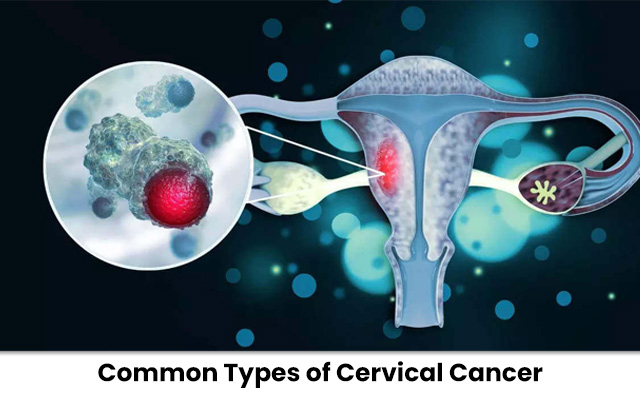Cervical cancer is a condition that affects the cells of the cervix, the lower part of the uterus that connects to the vagina. It’s important to understand the different types of cervical cancer to recognize early signs and seek prompt treatment. While cervical cancer causes vary, most are linked to the Human Papillomavirus (HPV), a common sexually transmitted infection. Let’s take a closer look at the most common types of cervical cancer and how they differ.
Common Types of Cervical Cancer
Cervical cancer can develop in different ways, and understanding the types is crucial for proper diagnosis and treatment. Here are the most common types:
1. Squamous Cell Carcinoma
Squamous cell carcinoma is the most common type of cervical cancer, accounting for about 70-80% of all cases. This type begins in the thin, flat cells (squamous cells) lining the outer part of the cervix. It usually develops in the transformation zone, where the outer cervix meets the inner cervix. Early detection of squamous cell carcinoma is crucial for effective treatment, as this type of cancer can spread to other parts of the body if left untreated.
2. Adenocarcinoma
Adenocarcinoma is the second most common cervical cancer type, responsible for approximately 20-25% of cases. This type of cancer starts in the glandular cells that line the cervical canal. These cells produce mucus and other fluids. Unlike squamous cell carcinoma, adenocarcinoma is less likely to be detected by a Pap smear, making regular screenings and HPV tests important for early detection. Adenocarcinoma tends to be more aggressive and can spread to other organs faster than squamous cell carcinoma.
3. Adenosquamous Carcinoma
Adenosquamous carcinoma is a less common cervical cancer type that contains both squamous cells and glandular cells. Because it combines elements of both squamous cell carcinoma and adenocarcinoma, this type can be more challenging to treat. It’s often diagnosed at a more advanced stage, which can make treatment more complex.
4. Small Cell Neuroendocrine Carcinoma
Small cell neuroendocrine carcinoma is a rare and aggressive type of cervical cancer. It develops from neuroendocrine cells, which are similar to nerve cells and hormone-producing cells. This type is fast-growing and tends to spread quickly to other parts of the body. Because of its aggressive nature, treatment usually involves a combination of surgery, chemotherapy, and radiation therapy.
Conclusion
Understanding the different types of cervical cancer is essential for early detection and treatment. While cervical cancer causes are primarily linked to HPV infection, regular screenings and HPV vaccinations can significantly reduce the risk. Whether it’s the common squamous cell carcinoma or the rarer adenosquamous carcinoma, each type requires a tailored approach for the best outcomes. By staying informed and vigilant about your health, you can take proactive steps to protect yourself from cervical cancer.

